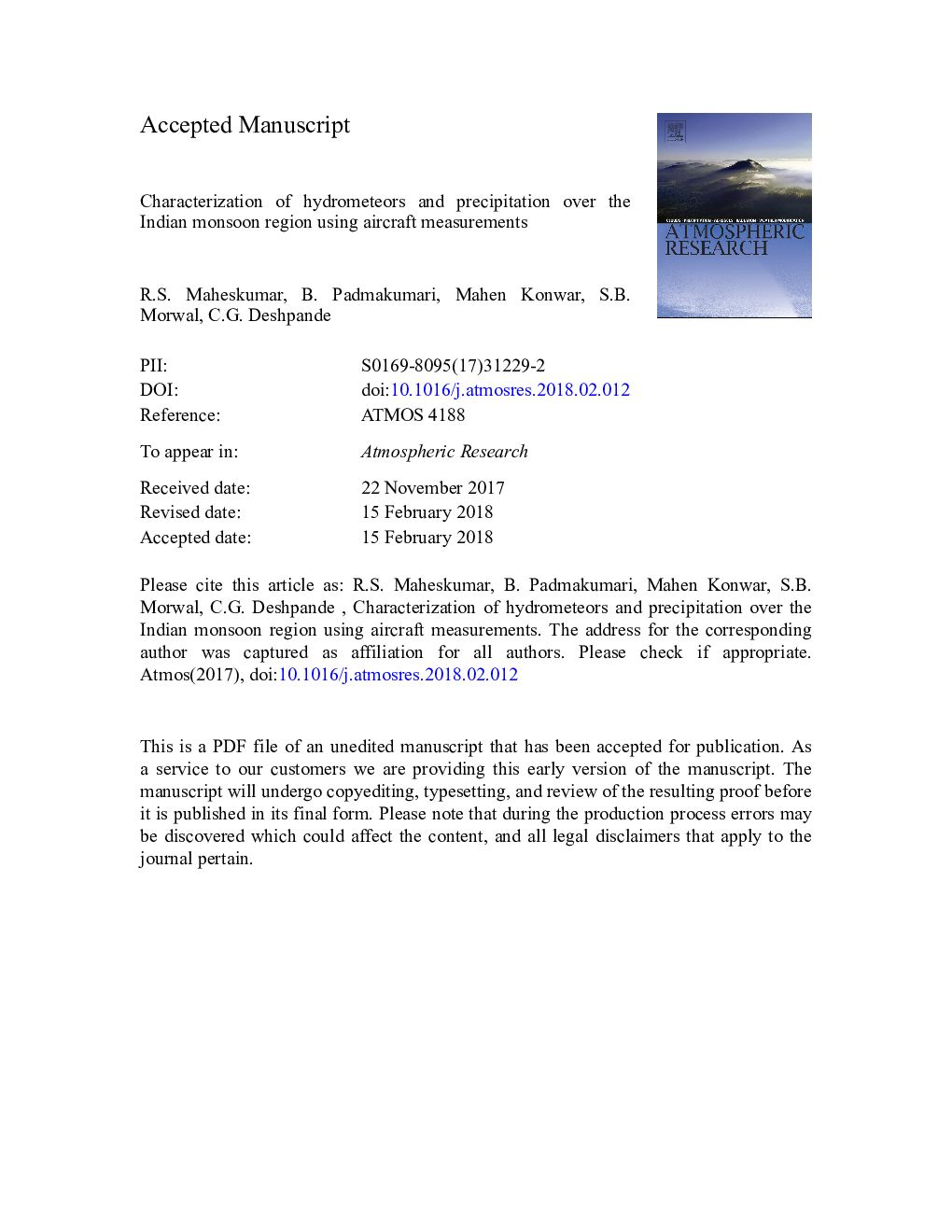| Article ID | Journal | Published Year | Pages | File Type |
|---|---|---|---|---|
| 8864712 | Atmospheric Research | 2018 | 32 Pages |
Abstract
In-situ observations of cloud microphysical properties, carried out over different parts of Indian sub-continent using an instrumented research aircraft during Phase-I of Cloud Aerosol Interaction and Precipitation Enhancement EXperiment (CAIPEEX) from June to September 2009, were studied. Different cloud probes were used to characterize the hydrometeor and precipitation types in the monsoon clouds. The results revealed that all liquid phase hydrometeors were present at temperatures â12â¯Â°C to 15â¯Â°C. Most of the presence of rain drops were found in the liquid water content (LWC) range from 0.5 to 2â¯g/m3. In general, rain drops are initiated when the droplet effective radius (Re) exceeded 12â¯Î¼m. Rain dominated at the tops of young growing convective clouds even at temperatures colder than â10â¯Â°C. Mixed phase hydrometeors were present at temperatures from â2â¯Â°C to â18â¯Â°C. The cases where mixed phase precipitation occurred at temperatures warmer than about â7â¯Â°C were associated with influx of transported dust aerosol at the upper (supercooled) region of these cloud systems. Ice only hydrometeors were found at temperatures extending from â10â¯Â°C to â22â¯Â°C. Most of the monsoon rain is produced by warm and cold cloud/mixed-phase processes in the cloud. The combined Re from two different cloud probes is useful for validation of satellite derived cloud microphysical parameter.
Keywords
Related Topics
Physical Sciences and Engineering
Earth and Planetary Sciences
Atmospheric Science
Authors
R.S. Maheskumar, B. Padmakumari, Mahen Konwar, S.B. Morwal, C.G. Deshpande,
